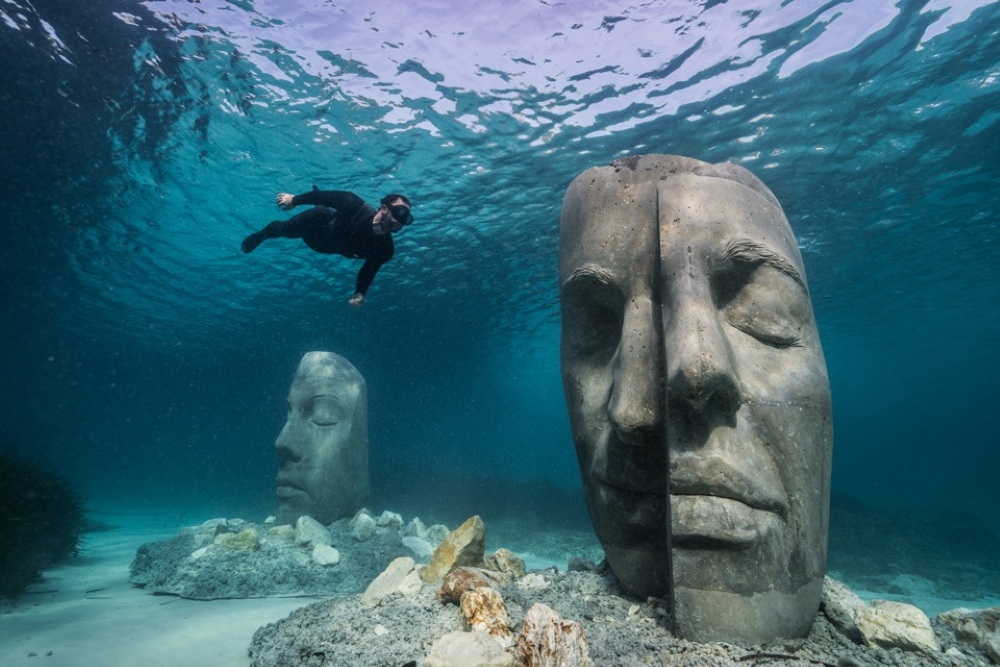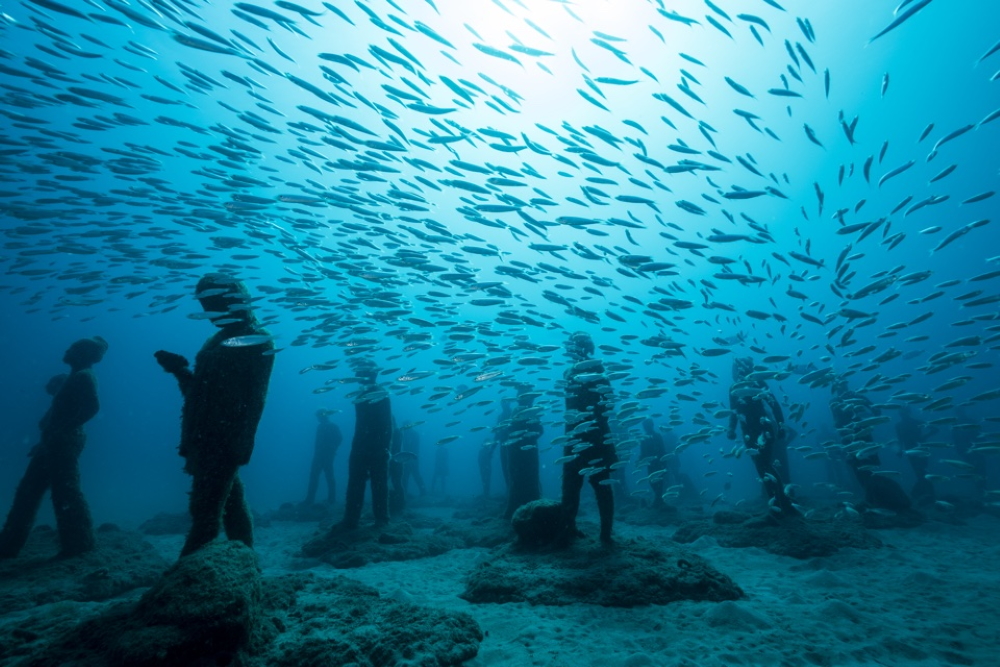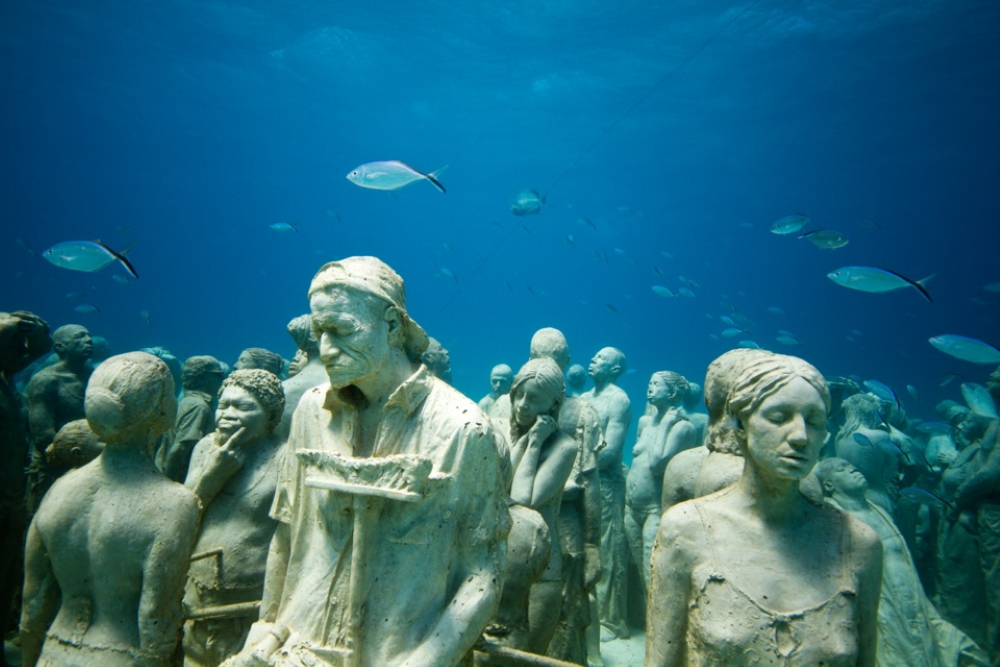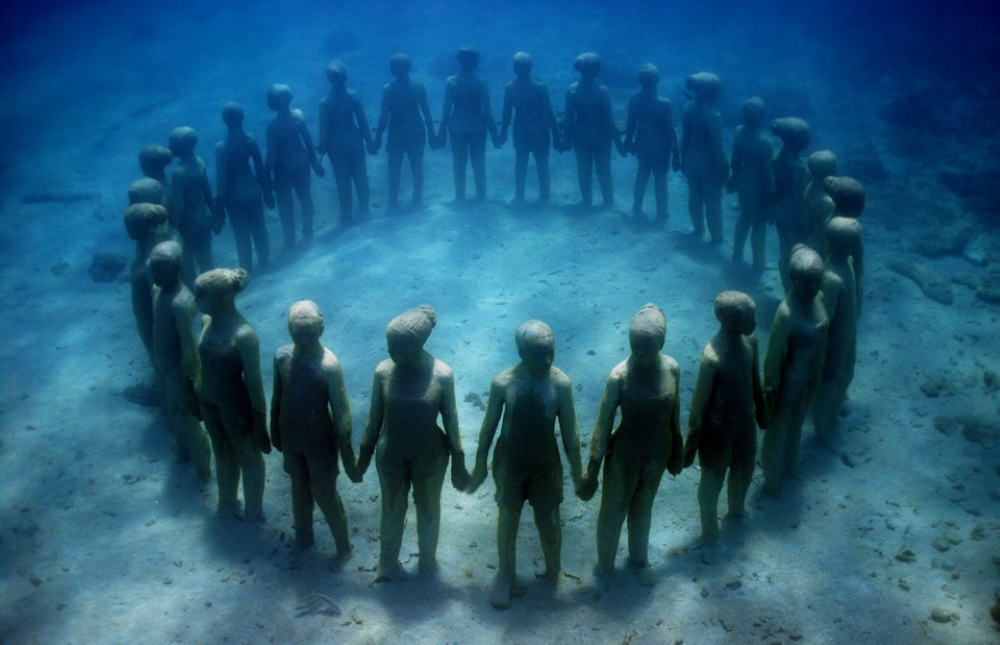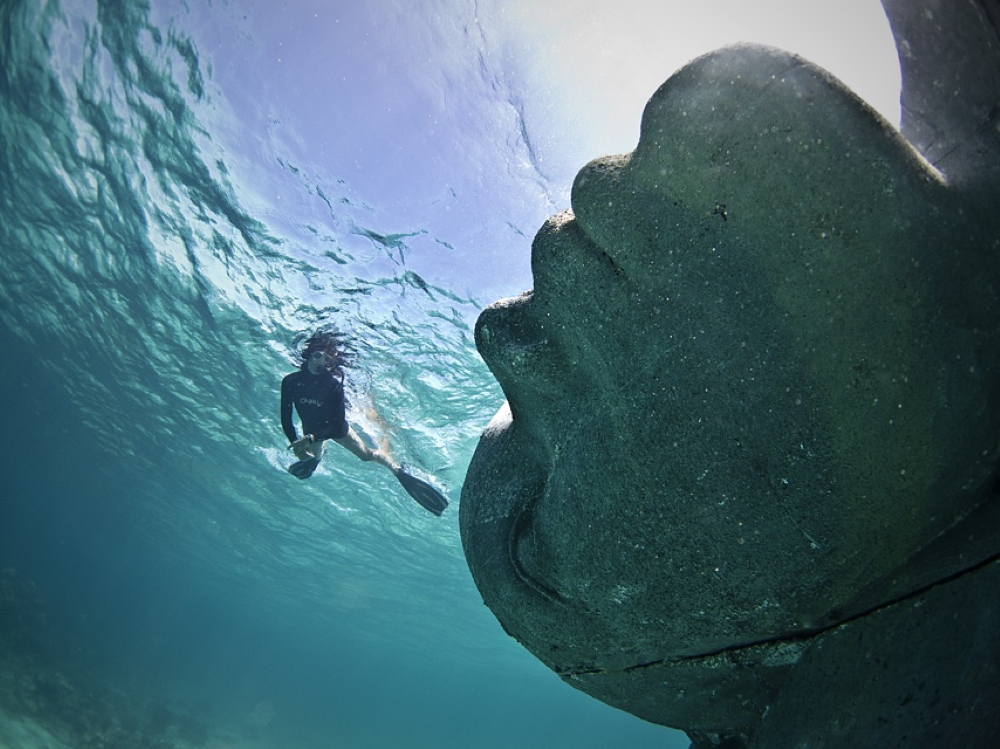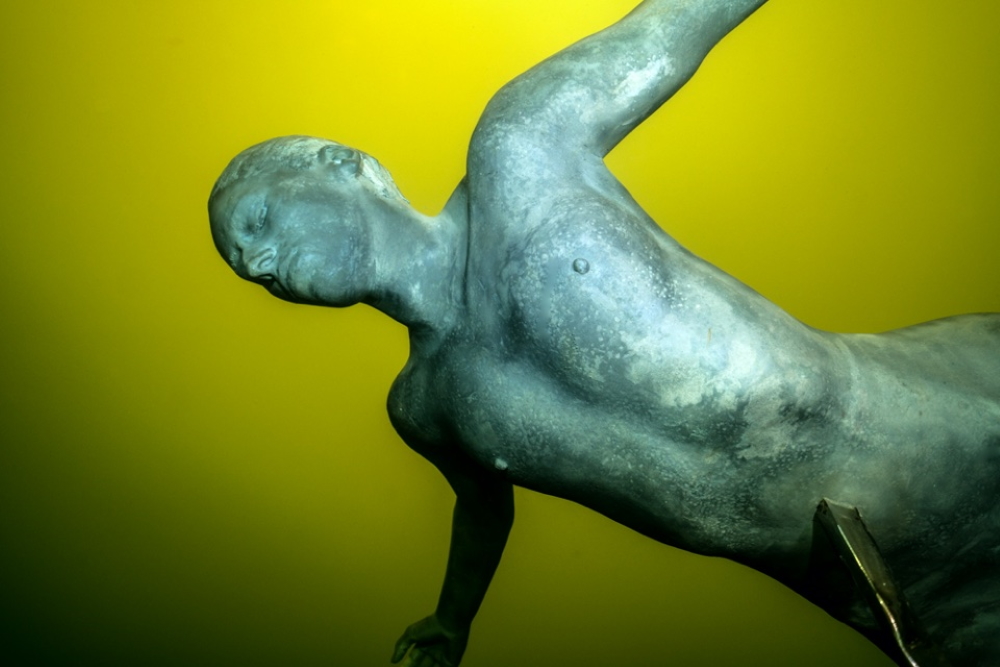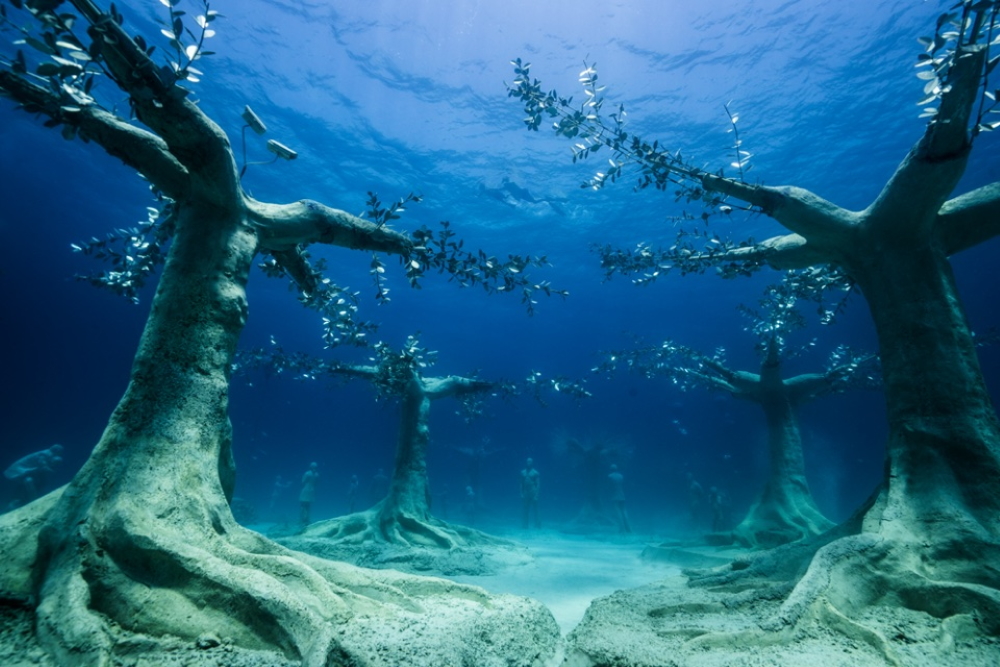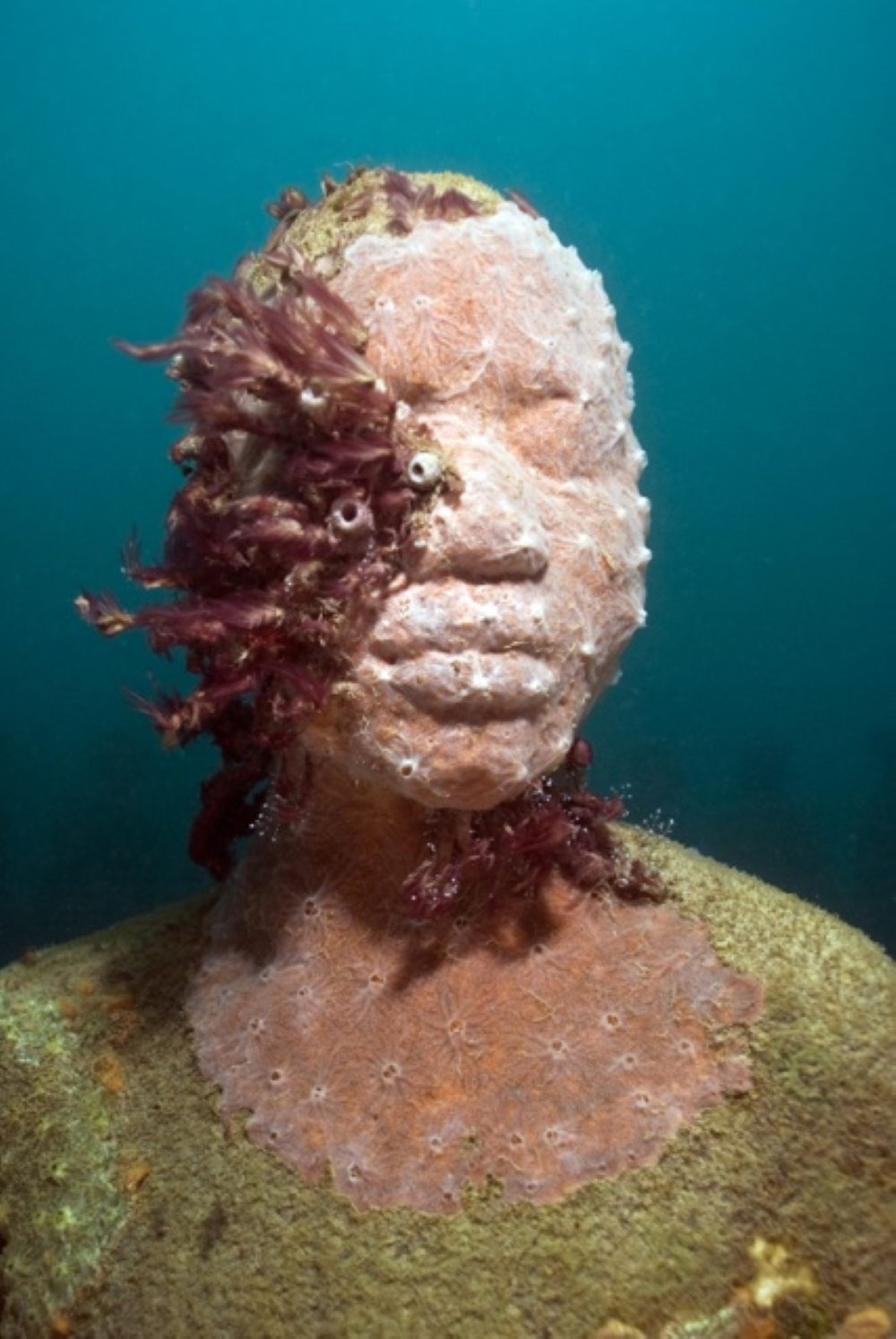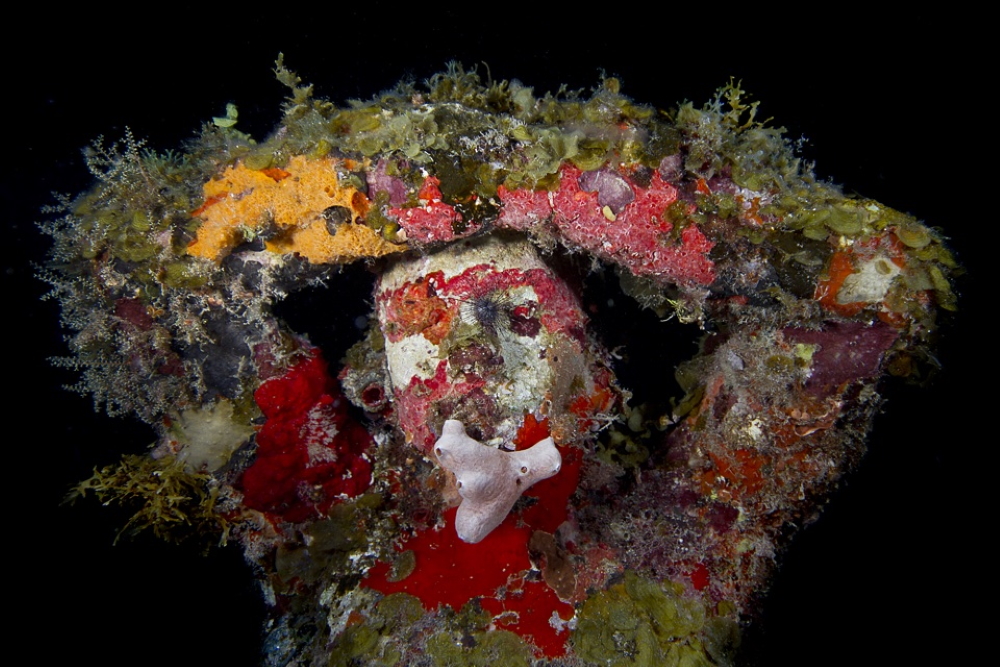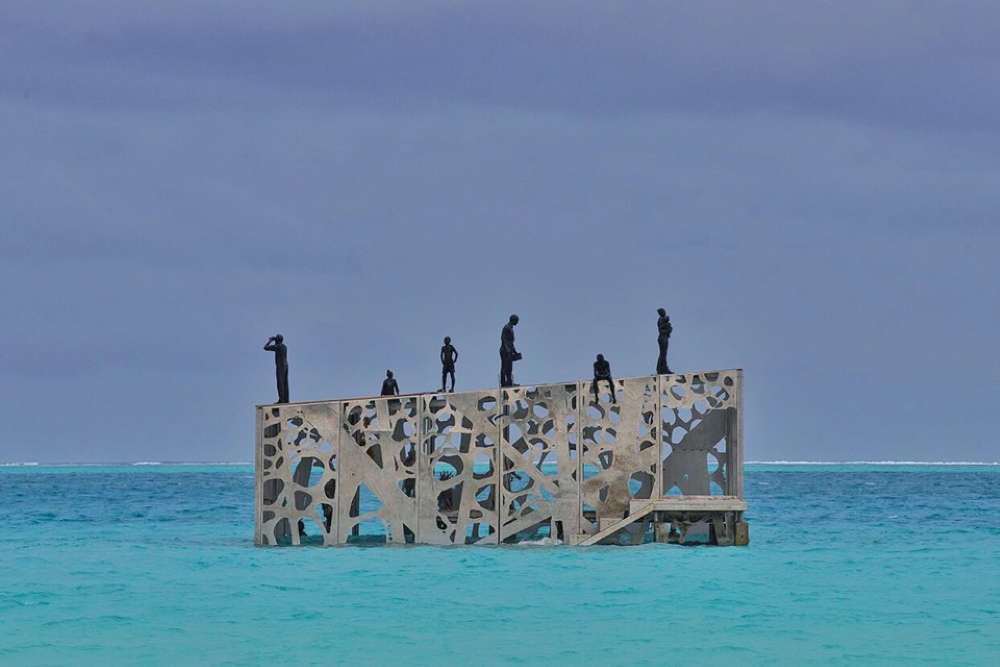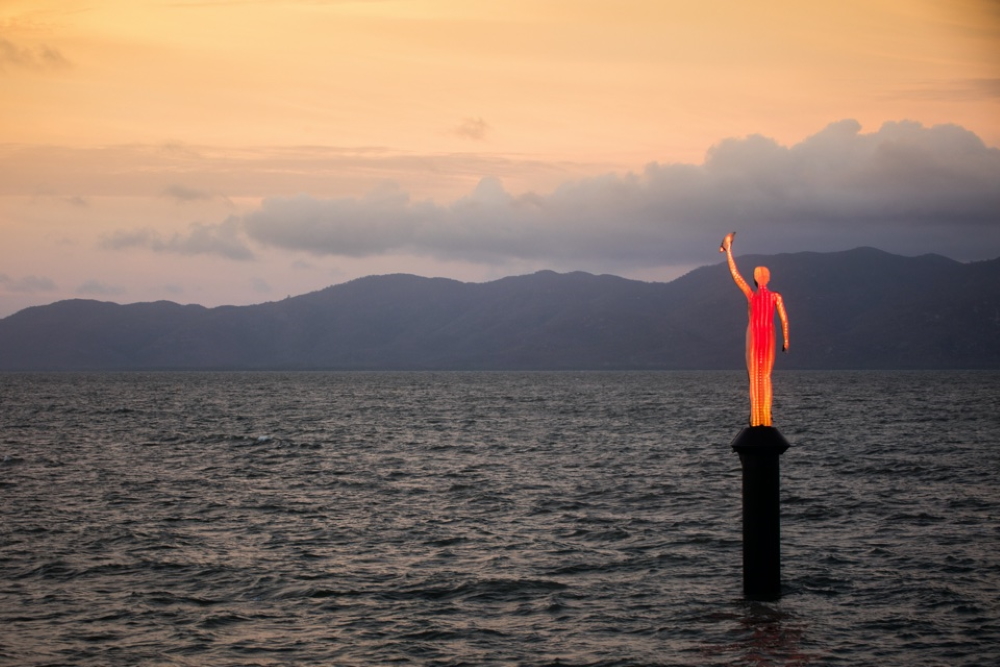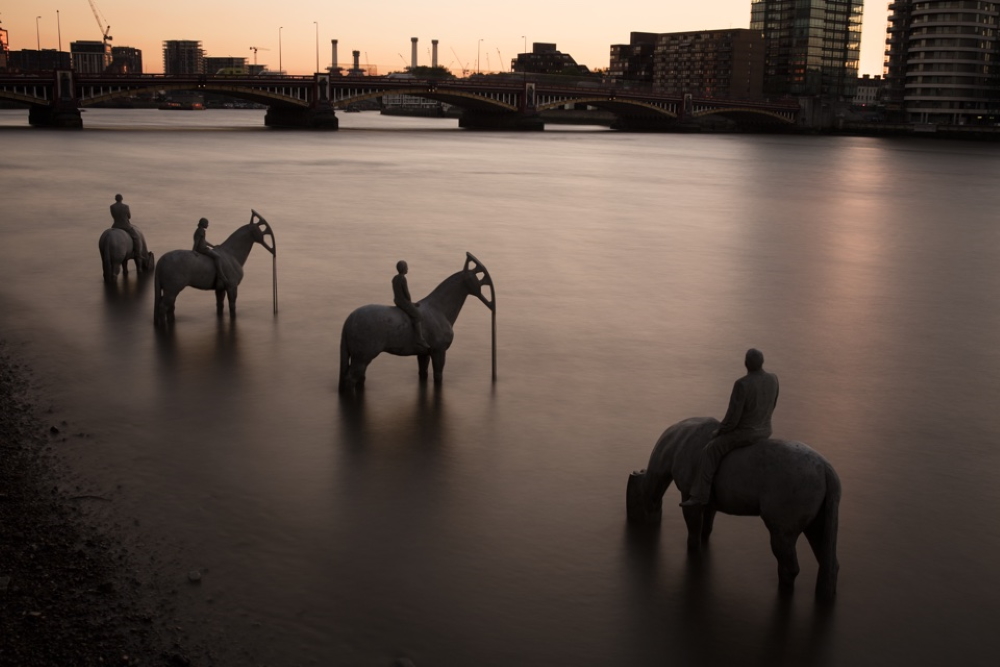Jason deCaires Taylor
sculptor / underwater photographer
GB
„The world’s first underwater sculpture park“ (Grenada, 2006), now listed as one of the Top 25 Wonders of the World by ‚National Geographic‘, and „The world’s first underwater museum“ (Cancún, 2009/2010). Both of them are linked by one man: Jason deCaires Taylor. The British environmentalist has received four ‚Guinness World Records‘, one of which was awarded in February 2021 for creating the most underwater artworks in the world. But most important: His eco-friendly produced dynamic sculptures develop into artificial coral reefs, encourage marine life and promote ocean conservation at the same time!
Jason deCaires Taylor
sculptor / underwater photographer
GB
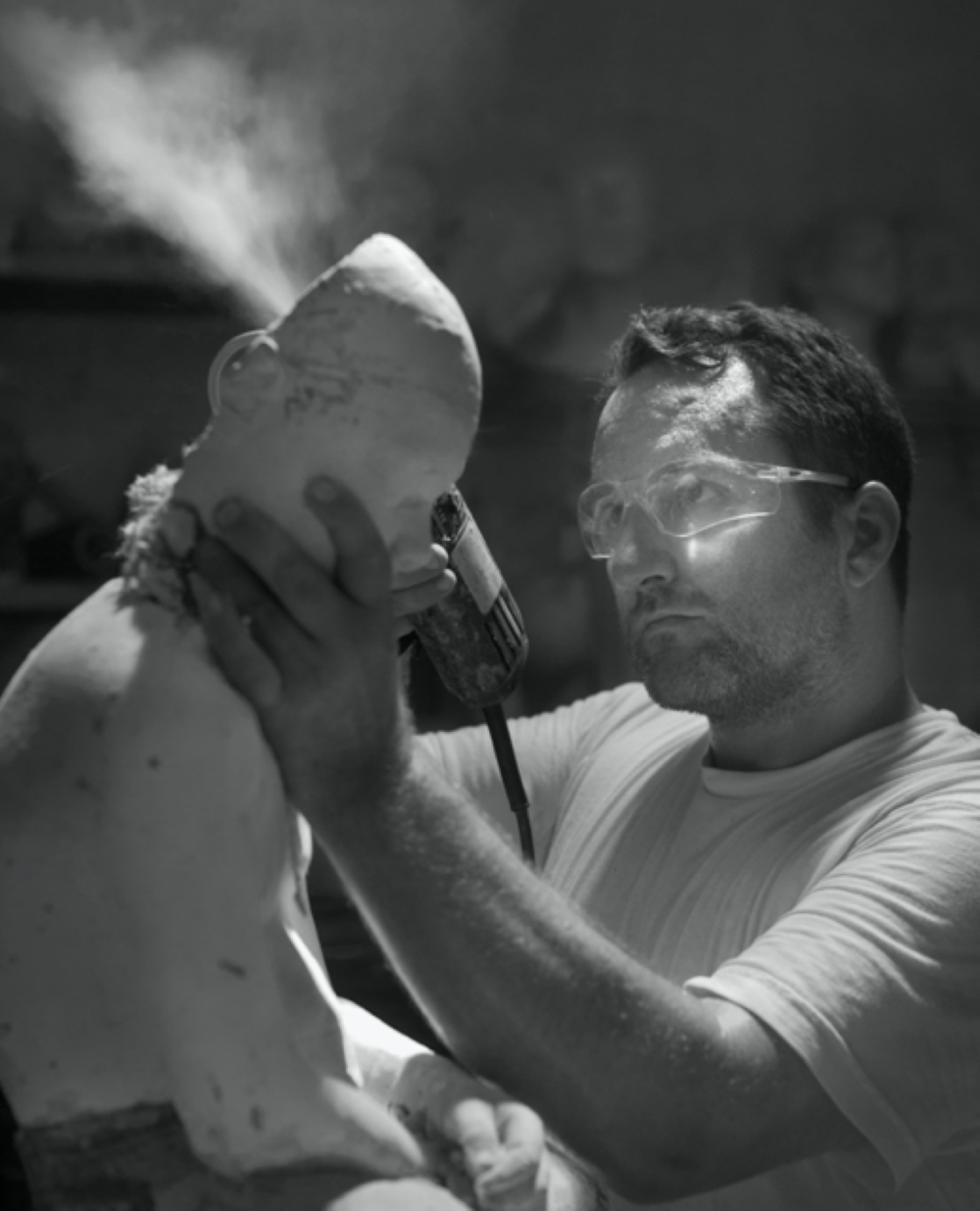
What influence does the place of birth have on the later course of life? In the case of Jason deCaires Taylor one might assume that it is a big one. He was born on 12 August 1974 in Dover, a major ferry port in Kent at the narrowest part of the English Channel. The only son of an English father and a Guyanese mother graduated from the London Institute of Arts in 1998 with a BA Honours in Sculpture and Ceramics. He became the first of a new generation of artists to shift the concepts of the Land Art movement into the realm of the marine environment, scuba diving from the age of 18. The title of Taylor‘s first work, „The Lost Correspondent“ (2005), already expresses his concern about the development in the environmental sector The majority of the haunting, enigmatic underwater scenes that he creates „are based on living people who are life cast and whose phenotypical qualities alter over time as they slowly evolve from inert concrete to living artificial reefs“ (Wikipedia). „I’m trying to portray“, he said in an interview with sribol.com, „how human intervention or interaction with nature can be positive and sustainable, an icon of how we can live in a symbiotic relationship with nature.“
Over the years Jason deCaires Taylor has produced over 1.100 public terrestrial and underwater sculptures worldwide. „Ocean Atlas“, installed in the Bahamas, was modelled after a local girl and depicts her carrying the weight of the ocean. Lanzarote’s „Museo Atlántico“, the first underwater museum within Europe and the Atlantic Ocean, shows „35 life-sized figurative sculptures walking towards a four meters high wall, all unaware that they are heading to a point of no return while they are looking down at their phones“ (Wikipedia). Taylor‘s „Ocean Siren“, located at the Strand Jetty in Townsville (North-Eastern Australia), not only acts as a warning beacon for climate change. It reacts to data captured by the Davies Reef Weather Station and changes color in response to live variations in water temperature. His installation „Cannes Underwater Eco-Museum“ has been included in the world’s 100 greatest places of 2021 by TIME Magazine.
Mr. Taylor has received numerous sculpture and photography awards, is a member of The Royal Society of Sculptors, an Ocean Ambassador to DAN (Divers Alert Network), an Ocean Exemplar of The World Ocean Observatory and a featured speaker. He has been recognized for both creativity and inspirational leadership in recent years by Fast Company and Global Leaders Today. The co-author of the illustrated book „The Underwater Museum: The Submerged Sculptures of Jason deCaires Taylor“ (Chronicle Books) was awarded The Global Thinker Award by Foreign Policy and was described as ‚the Jacques Cousteau of the art world‘.
Art writer, Dr. David De Russo, notes that "the sculptures are a living evolutionary exhibition as nature colonizes, and the sea and tidal movement deform their appearance developing a platform which will promote the re-generation of marine life. They are a means of conveying hope and environmental awareness."
Jason deCaires Taylor lives and works in the south east of England and is married with two children.
Interview July 2022
Deep „seaing“: the magic of underwater art in unique natural sculpture parks and museums
INTUITION/IMAGINATION
Are great ideas based on intuition and - as a possible follow-up - do they reveal themselves in a kind of clear as well complete version that just to be realized? Or is it endless trials and errors that result in constant developments up until the final result?
I generally have a clear idea of what I am looking to achieve from the outset. I envisage the forms, the light, and how my sculptures will look once colonized by marine life forms. I often have an exact placement in mind. However, as these tend to be part of large scale public projects, the original vision is always compromised by a series of challenges. These may be logistical, political, cultural, financial or often structural problems to solve.
INSPIRATION
What inspires you and how do you stimulate this special form of imaginativeness?
Anger and frustration often inspire me. Our seeming helplessness and political paralysis in the face of environmental destruction are very motivating forces. It is a continual dance between hope and despair. Each inspires in different ways. Witnessing the regeneration and resilience of the natural world helps to envisage alternative futures. Seeing the level of denial of climate change in the media and the pernicious influence of the fossil-fuel industry on our political representatives provokes a response. However, my imagination is quite often stimulated by the mundane, routine moments of life that I see from a different angle.
How do you separate the good from the bad and which ideas are worthwhile to be explored further or whether one idea has the potential of being outstanding really?
Just as a novelist who starts writing with a vague idea of a story but not knowing exactly where the story will take him, I really believe in just starting. It is all a journey and ideas are constanting mutating into other forms which can be either bad or good depending on your perspective. Chance plays such an important part of my work as mostly it is left to the elements to evolve. I always believe in finishing what I set out to do. One of the key things I struggle with at the moment is the bombardment and intensity of imagery we are subjected to on a daily basis. It is harder to establish what you have seen virtually from what you have lived through. I continually question whether the outcome I often look for is part of an image I have seen elsewhere.
This is why it is important to begin the work and let the idea evolve.
CREATIVITY
If problems occur during the creativity or one’s stuck, how can that be solved?
I wish I knew the answer to that. There is nothing worse than a blank canvas. I find it useful to put every idea that comes to mind down in front of me and then slowly dismantle each concept. I find walking and a change of environment helps.
How is innovation still possible if one has established a distinctive style?
There are endless possibilities which develop from each style. I think the closest you can come to finding perfection is by continually building on what you have already achieved. However, that is not always compatible with a restless mind. I think artists inherently look to experiment and try different things. I really struggle with repeating ideas. There are endless examples of musicians and visual artists frustrated by being typecast, but the continual reinvention is an exhausting task.
SUCCESS
Is it desirable to create the ultimate/timeless work, but doesn’t “top of the ladder” bring up the question of “what’s next?” i.e. isn’t such a personal peak “the end”?
I am at that age where I think a lot about where your personal peak is, what your legacy will be like. An intense battle rages between trying to achieve a sense of accomplishment and the realisation of your greatest ideas and the impact that has on your quality of life, health and the people around you. I know there is no final work or peak that will ever bring you to the top of the ladder and it is all a matter of process. I am slowly trying to adjust to that.
MY FAVORITE WORK:
I think one of the works I am most proud of is the „Rising Tide“. It is impossible to exactly predict how each will integrate into its surroundings. This work transpired almost exactly how I had envisaged it and the power of the surrounding body of water gave it immense impact.
